Dyshidrotic Eczema
Last reviewed by Dr.Mary on October 4th, 2018.
What is Dyshidrotic Eczema?
This is a skin problem which is also known as dyshidrosis or pompholyx. This skin condition creates fluid-filled, small blisters or vesicles on the soles of the feet or palms of the hands or both.
These blisters occurring in dyshidrotic eczema normally last around three weeks and causes extreme itching. When these blisters dry, cracks and grooves or fissures develop, which can be very painful.
Management for dyshidrotic eczema most often requires topical creams, ultraviolet light or wet compresses to improve the appearance as well as ease symptoms.
What causes Dyshidrotic Eczema?
The cause of dyshidrotic eczema is not known. But, it can be linked with a similar disorder of the skin known as atopic dermatitis as well as allergic conditions, for instance, asthma and hay fever known as allergic rhinitis. Eruptions can be seasonal in individuals with allergies.
With dyshidrotic eczema, the affected areas of the skin come to be inflamed. Because of this, the connections between the cells of the skin open and this allows fluid or serum to seal these spaces. Physicians denote this development as spongiosis since when viewed under the microscope; the skin appears sponge-like with these numerous fluid-filled spaces.
Dyshidrotic Eczema Symptoms
Signs or symptoms of dyshidrotic eczema include:
- Itchy bumps which are small and which steadily develop into a rash consisting of vesicles which are blisters filled with fluid.
- Itching is intense
- With large blisters, there is pain – not so much with smaller blisters
- Fissures which or grooves or cracks on your toes or fingers
- Develops on the fingers and palms on the hand as well as toes and soles of your feet
- Blisters usually last about two to three weeks
Risk aspects for dyshidrotic eczema include:
Females
Females seem to have this condition more than men
Under Stress
Appear to be more frequent during stressful times
Metal Salts Exposure
Can include cobalt, chromium, and nickel – generally through cement or mechanical work.
Seasonal allergies
Such as hay fever
Moisture Exposure
If your skin is frequently open to water or other wet elements, this can trigger dyshidrotic eczema
For many individuals, dyshidrotic eczema is only an itchy awkwardness. But for some, the pain, as well as the itching, can limit the use of the hands. In other cases, damage to the skin– including stiffening of the skin – or an infection caused by the bacterium, can occur because of the sponge-like skin or due to scratching because of the intense itching. This can cause treatment to be more difficult as well as lengthier.
If you have a rash on your hands or feet which does not go away by itself in a few weeks, you should call your primary care physician. You should also contact your physician if he has diagnosed dyshidrotic eczema and the symptoms or signs of an infection, including pain, inflammation or fever have occurred primarily at the site of the rash.
In the majority of cases, your physician will be able to diagnose this skin problem solely on a physical exam. But your physician can also recommend a process called a KOH test to exclude other skin problems, such as fungal infection or contact dermatitis. The KOH test is performed by your physician scraping the skin with a glass slide and collecting dead skin cells. These skin cells are mixed with potassium hydroxide and then viewed under a microscope to single out a fungal infection.
If an allergy is suspected, a contact hypersensitivity allergy test can be done. This is generally referred to as a “patch test.” In the course of a patch test, possible allergens are smeared to a patch which is then positioned on the skin to check for any response.
Home Remedies for Dyshidrotic Eczema
- If you did have dyshidrotic eczema, the following self-care procedures could help:
- Scratching the rash should be avoided
- Skin exposure to water should be limited
- Use hand cream to moisturize hands after washing them
- Protect the hands from any irritants such as lotions that are perfumed or dishwashing soap
- Moisturize the hands or feet frequently so that they do not get dry
- Soak the affected areas with white vinegar or salt water soak for a period of time
- Never rub the skin but rather gently pat dry the skin to avoid any irritation
- Hot baths should be avoided – instead use lukewarm baths
- Use only fragrance-free, gentle soaps as well as other skin care products
- Avoid nickel completely
- Avoid harsh cleaning products such as detergents, chemicals and even with those which are mild, wear protective cotton gloves – not synthetic ones.
- Avoid scratching and keep nails clean and short
Dyshidrotic Eczema Treatment
A plan of treatment for dyshidrotic eczema includes:
Corticosteroid ointments or creams
The physician can recommend high-potent corticosteroid topical creams which help to hurry the fading as well as progress the appearance of the blisters and treat the cracks and fissures which happen after the blisters dry. In severe cases, the doctor can prescribe oral steroids.
Antihistamines
The physician can mention anti-itching drugs called antipruritics or antihistamines such as Benadryl or Claritin, or Alavert to relieve the itching.
Compresses
Cold or wet compresses may help alleviate itching, increase the effectiveness of the topical creams as well as minimize blisters.
Phototherapy
If most treatments are not effective, the physician can recommend an ultraviolet light therapy which is a special type called psoralen plus ultraviolet A or PUVA. This therapy combines exposure to ultraviolet light with drugs which helps make the skin more amenable to the effects of the light. There is also a newer kind of ultraviolet B light referred to as narrow-band ultraviolet B which can also help for some individuals.
Immune-suppressing ointments
These drugs such as Protopic and Elidel can be useful when other treatment options have failed. But since they suppress the immune system, skin infections can be very likely.
Botulinum toxin injections
Some physicians can consider botulinum toxin injections to treat the most severe cases of dyshidrotic eczema. This is a comparatively new treatment option which has not yet gained acceptance in the medical community.

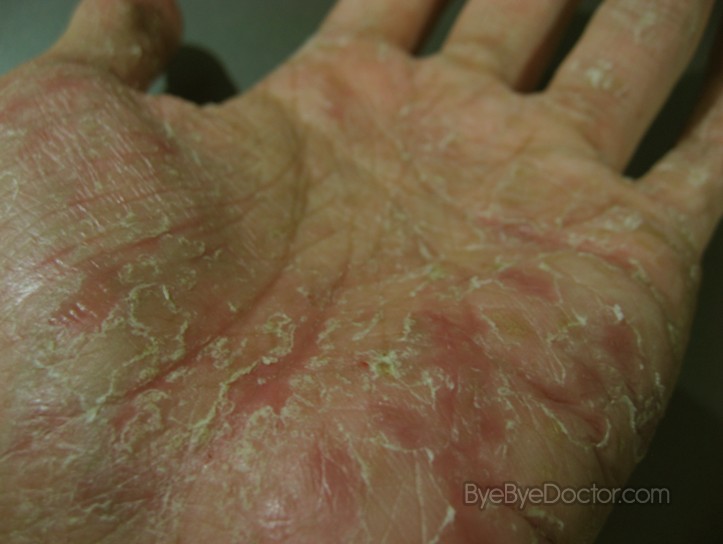
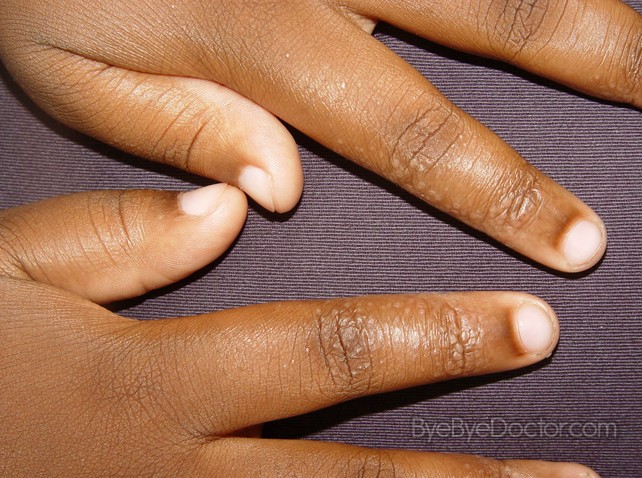
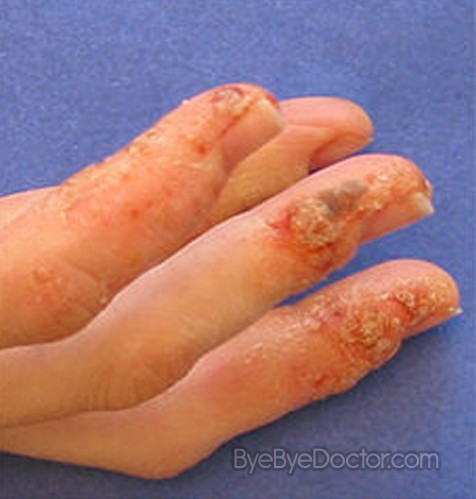
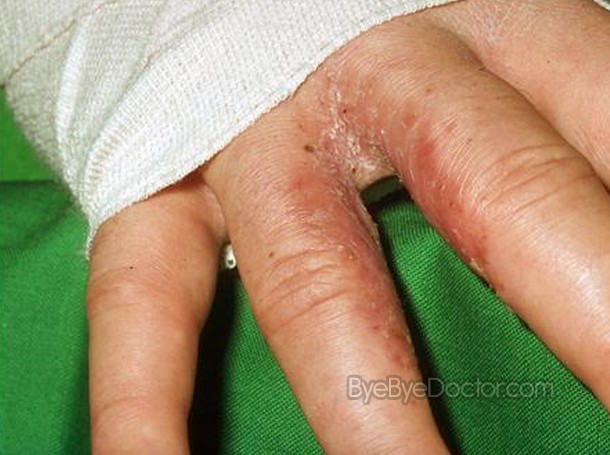
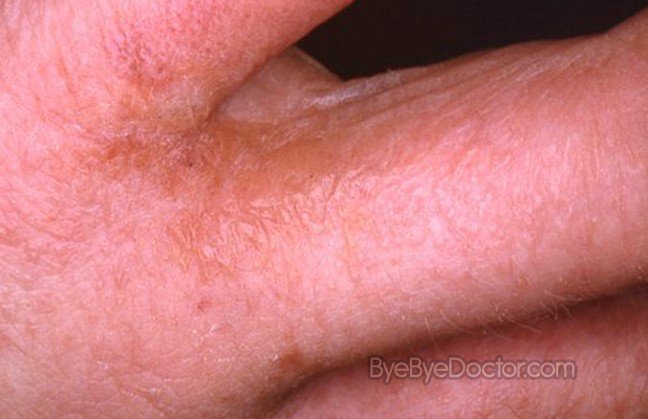
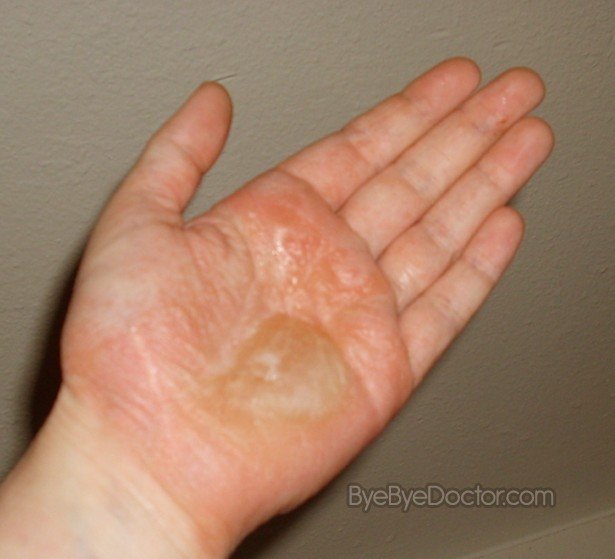

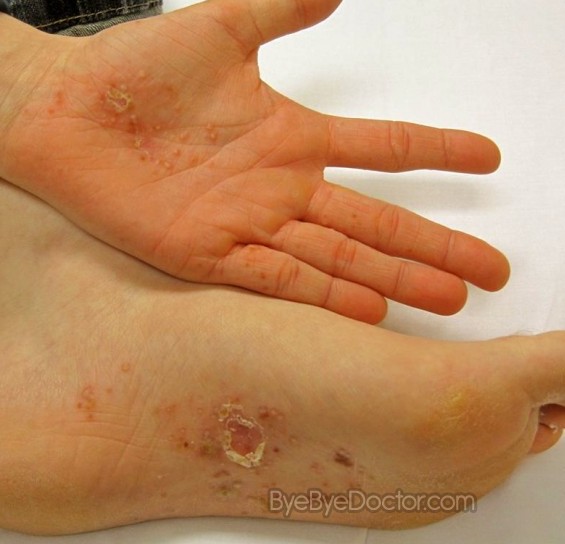
I am desperate for any more info or tips on how to find relief for my eczema. It is causing much pain and grief.
Lauren,
I have been applying coconut oil (from health food store- pure, unrefined) at least twice a day and it has helped. It is not a “cure” but has lessened the cracking of the skin. Hope you can try it and get some relief.
I just saw a post from someone that said to apply Pepsodent Toothpase (no other brand) to the area infected. I’m on my way out the door to pick some up. Just thought I’d share that
Sarna Lotion for Sensitive Skin helps with itching. Can be found at Walgreens.
I take a Pepcid AC. In 15 min the itch is gone.
Cetaphil soap (non-antibacterial) seems to help me. Comes in lotion and bar soap form.
I just started developing these little blisters on one finger. My middle one on my left hand. My first attack was three blisters that turned into one. It was painful. I tried everything and nothing worked. My boyfriend has psoriasis and found a new product by Jurassic Secret. It’s a psoriasis cream. I have been using it on my finger and it is WONDERFUL! It’s not a cure but it does speed up the healing process. The blisters disappear quickly without pain! I love this stuff. I use it two to three times a day plus cetaphil cream to keep my hands from drying out. Hopefully someone else can get some relief from this post…
I work in food services and oddly enough the “quat” cleaning salution clears my dyshidrotic eczema up, my work is only in the summer and my eczema comes back right when i leave for the school year. so it must be some chemical in it.
I have had dyshidrotic eczema for about a year, and my case is a littler worse than moderate during the fall. What I found that helped me the most with the itching was the anti-fungal cream Budpak, with 1% clotrimazole. I don’t know which ingredient(s) helped the itching disappear, but I’m glad I was curious enough to try it! Right after I wash my hands, I apply the cream. Hardly any itch for hours.
I. have this
70% alcohol solved my problem. When the blister is still small I use a clean needle to pop it then water will come out, then I rub it with alcohol. It will hurt a bit then will turn to a tiny dry wound and then heals without a scar.
I would say change your diet. Throw out bad saturated fat laden food. Switch to coconut oil. Eat things that are rich in omega 3s and omega 6s. Alot of the problems we come in contact with are from the foods we eat. There are healthy foods that keep diseases and viruses and infection at bay. Heal from the inside out my friends.
I’ve tried Pepsodent toothpaste and it gave me some relieve but it couldn’t get rid of my eczema. I doesn’t burn. I’ve also tried Champho Phenoque (spelling?) it’s a gel for blisters and cold sores and it helped the blisters to dry out quicker, but I haven’t found anything to cure it yet:( hope this helps.
Mine drives me crazy. No sooner does it heal, it’s back again. I’ve tried everything, from meds to ointments. I now use an oatmeal soap when I take a shower. I’ve noticed though mine gets really bad when I’m stressed.
At the onset of a breakout I use a facial mud mask called Fango. I put it on the effected area and let it dry in the same fashion as if used on my face. After it dries I gently rinse it off with cool water then moisturize with a lotion called Renew form Melaleuca the wellness company. The itching goes away immediately and the breakout ceases witin a couple of days.
Ive had mine for 3years now its on my right pinky its spreading all around my pinky. and it would heal for about a week then return again. I used so many creams and ointments and nothing seems to completely heal it. It releases a clear liquid all the time. School just started so I don’t have time to take care of it as much. I just put neosporin and a bandaid. I just cant live with this. I keep getting asked about it and I lie and say oh I fell down the stairs and scraped my hand. I’m tired of lying I need this to completely heal. Ive already had eczema behind my knees and my arms. I’m tired of these people always asking and I have to explain. I’m tired and sick of it. I’m 15 and I’ve had eczema since I was a kid. This is just getting worse. I just need this one thing to clear up. Please someone find a cure before I practically kill myself. I already have so many problems with my body and my self esteem. I’m so insecure already. Please someone help me.